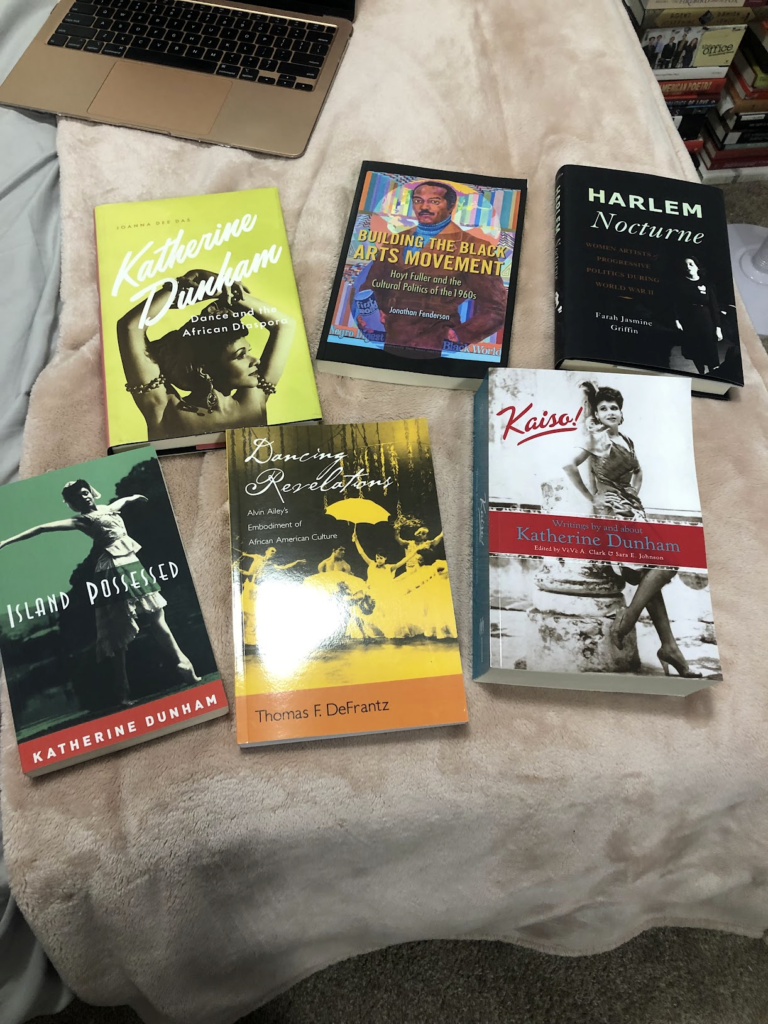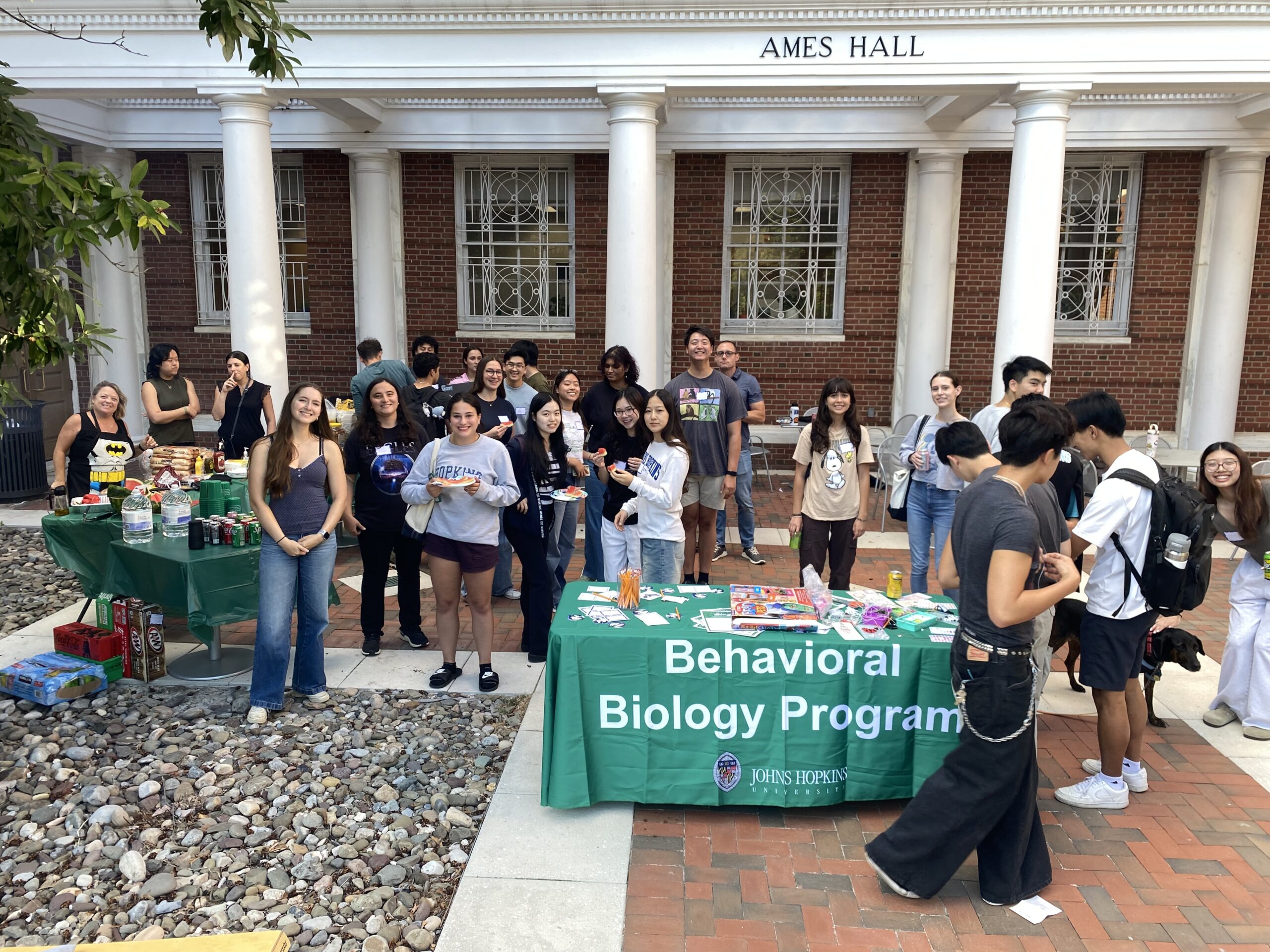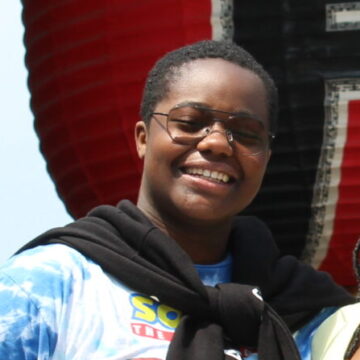
Hi there! I’m Holly, and I just graduated from Hopkins, where I was a Woodrow Wilson Fellow in Theatre Arts and Studies (yes, we have a theater program and yes, you can do theater research at Hopkins!).
The Woodrow Wilson Research Fellowship is Hopkins’ largest undergraduate research grant; you get up to $10,000 to research pretty much anything over the course of three years. Wilson Fellowships are open to current first-years, too! I applied during my first year and received $7,500 to put toward a three-year theater/history project, titled “Resistance, Radicalism, and Revelations: Black American Theatre and Performance from the Harlem Renaissance to the Black Arts Movement (1921-1988).”
My project builds on research I did on the Harlem Renaissance as an International Baccalaureate History student in high school. I’ve always been fascinated by the 1920s, and I’m a theater and dance kid through and through, so I thought, “What better way to unify these interests than through a project?” As I progressed through my research, I decided to expand the scope of my historical musings and chronicle Black American performance throughout the 20th century.
While URSCA (the folks that supervise the fellowship) only requires Wilson Fellows to complete one sustained project over three to four years, my project evolved into several case study sub-projects (if you will), some of which sprang from my coursework as a History major and Theatre Arts and Studies minor. I ended up writing four major scholarly works, each drawing their own conclusions. I’m super proud of them!
Here are the titles:
- “A Vital Cultural Ambassador to the World”: Dance Diplomacy and Civil Rights in Alvin Ailey’s 1970 Soviet Union Tour
- A Dramatic Ethnography: Ethnographic Method as Structure in Zora Neale Hurston’s Spunk (1935) and De Turkey and de Law (1930)
- “The Work We Are Attempting to Do”: The Politics of Representation in Shuffle Along (1921)
- “A Rare Standing Ovation”: Ballet Diplomacy, Black Transnationalism, and Russian Myth: The Dance Theatre of Harlem in the Soviet Union (1988)
I guess you might be wondering, if I’m not purchasing lab equipment like the STEM researchers, then what did I spend $7,500 on? My plan was to travel to New York City each summer to conduct research in the New York Public Library archives while seeing shows, too (you heard that right; you CAN spend Wilson funds on Broadway tickets!).
Save for in-person trips to the Library of Congress, I didn’t get many chances to travel due to COVID restrictions. Fortunately, I could access most archives digitally, since lots of libraries (both in the U.S. and internationally) adopted a scan-and-deliver system. That meant I could request materials from the libraries and have them sent to me electronically for a small fee. The best part about working with archives (and the reason why I love being a historian) is because old documents are effectively a window into the past. Viewing show programs, newspapers, and production photos from years past (and physically touching them when I was in person) helped me develop a deeper connection with the people, places, and events that I was writing about, which was really rewarding to me.



My COVID-safe journey to the Library of Congress in 2021! Shout out to my mom for the perfectly awkward photo of me and the wonderful LOC librarians for the plethora of boxes related to Alvin Ailey’s international dance diplomacy.
And being the bibliophile I am, of course I spent some Wilson funding on books! I was encouraged by my Wilson advisors to build my library, so I took that as an opportunity to amass an entire collection of books relevant to my scholarship. As I head into grad school, I know I’ll be returning to these volumes frequently. It’s also great having my own copies instead of library ones (no hate to the dear library) because I can annotate freely and keep track of my ideas right inside the pages.

One of my more recent Wilson book purchases—a collection of dance history and Black Arts Movement texts. I used these to supplement my research on the Dance Theatre of Harlem.
I also used my funding to present at academic conferences. For those of you who aren’t familiar (I certainly wasn’t a few years ago), a conference is basically where a bunch of cool people get together, present research, and learn from each other’s work. It’s so much fun! I have been invited to conferences like the Northeast Popular Culture Association Conference, the Pacific Ancient and Modern Languages Conference at UCLA, and the French Association of American Studies Conference. Several of these were held on Zoom due to COVID restrictions, but I had a wonderful time sharing my knowledge with a diverse audience and learning from scholars across the globe. Being a Wilson Fellow, I also got to moderate some sessions at the Macksey Symposium, a humanities conference organized by the URSCA office.


Presentations for Macksey and NEPCA conferences, respectively.
While the funding is a major perk that comes with being a Wilson Fellow, another benefit is the mentorship. My mentor for this project was John Astin, former Homewood Professor of the Arts and former Director of the Program in Theatre Arts and Studies (he recently retired). Professor Astin taught several of my college theatre courses, and (fun fact) he played Gomez Addams in the renowned TV series The Addams Family in the 1960s!
I would regularly meet with Professor Astin to discuss my project; I’d update him on my progress and he’d recommend different plays and books to read. We’d also frequently discuss James Joyce’s Ulysses, because why not? (In fact, these discussions inspired my side-quest honors thesis on neurodivergence in Joyce’s A Portrait of the Artist as a Young Man!) My Wilson project was a great way to get to work with Professor Astin outside of the classroom setting.
Another exciting component to the Wilson Fellowship is the opportunity to grow your CV (short for curriculum vitae, which is an extended resume of sorts, listing all your academic accomplishments). For instance, the URSCA office gives out “named awards” every year to what they consider the “highest quality projects” (similar to how a professorship might have a donor’s name attached to the title). In April 2022, I received the Milton B. Strizever award to recognize my work! I was thrilled and honestly surprised.
I also won the 2023 Arthur Kouguell Memorial Prize for Best Undergraduate Thesis in History for my thesis on the Dance Theatre of Harlem, which I used Wilson funding to support. Additionally, I won the 2023 Michel-Rolph Trouillot Prize for Best Essay in Anthropology for my Zora Neale Hurston research, another of my Wilson-funded undertakings. I was commended especially for my archival research in both of these essays, which was made possible through the Wilson Fellowship!

The picture I sent my mom moments after winning the Trouillot Prize.
I think the greatest reward of my Wilson experience was taking the journey alongside the other wonderful fellows in my cohort! We’d meet about once a month for information sessions, workshops, and events like game nights and movie nights put on by the URSCA office. I was always amazed to hear about the research my colleagues were doing in fields so vastly different from my own, such as astrophysics, education, and cognitive science. In May, all the seniors presented their projects at the URSCA Awardee Symposium. I was so proud of myself and my cohort, seeing everyone’s hard work come together at long last.

Presenting my work at the URSCA Awardee Symposium in May 2023.
Between working in the archives, discussing my research with my mentor, and gaining inspiration from the other Wilson Fellows in my cohort, I can safely say that the Wilson Fellowship has been a highlight of my Hopkins experience! This fall, I’ll be starting my Ph.D. in English at the University of Michigan, where I hope to build on the exciting work I began as a Wilson Fellow. This fellowship helped me discover a passion for research that I never knew I had!





